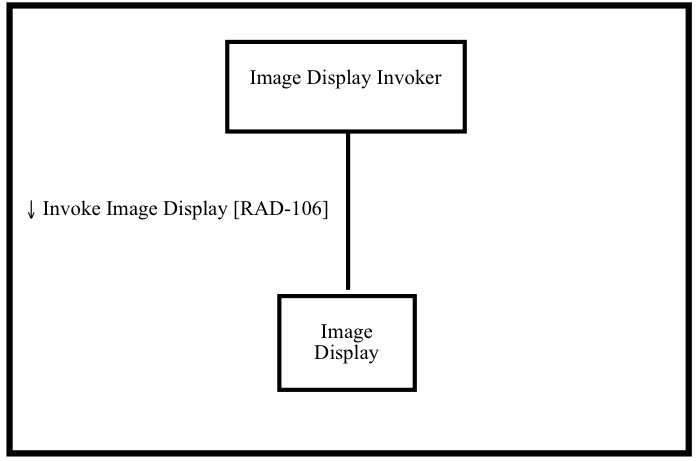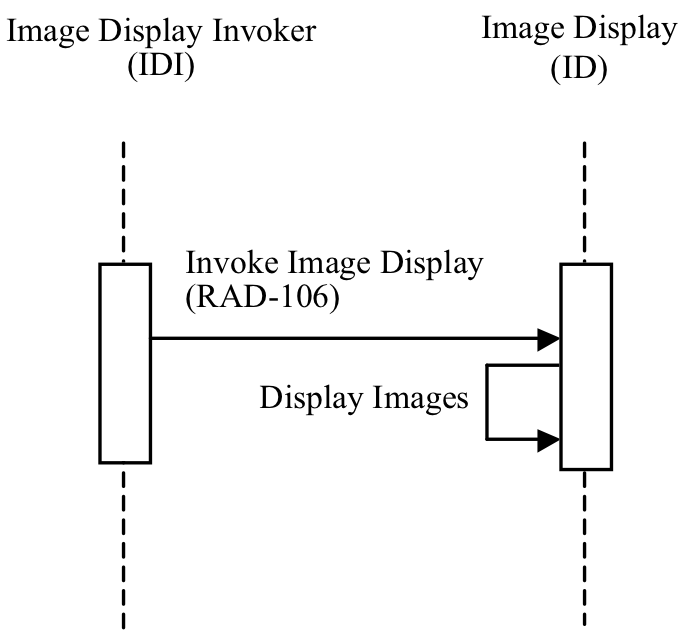Difference between revisions of "Invoke Image Display"
| Line 71: | Line 71: | ||
* [http://www.dclunie.com/papers/IHE-RAD-IID-Webinar-Clunie_20130708.pdf Invoke Image Display (IID) IHE Webinar] | * [http://www.dclunie.com/papers/IHE-RAD-IID-Webinar-Clunie_20130708.pdf Invoke Image Display (IID) IHE Webinar] | ||
| + | * [[media:IHE-RAD-IID-Webinar-Clunie_20130708.pdf Invoke Image Display (IID) IHE Webinar]] | ||
'''External Links''' | '''External Links''' | ||
Revision as of 11:29, 29 September 2015
Invoke Image Display (IID) allows an EHR/PHR/RIS to request a PACS (IM/IA/ID) to display images of a study.
Summary
Invoke Image Display (IID) is an IHE Integration Profile that simplifies the task of integrating non-image-aware systems like EHRs, EMRs, PHRs, RIS and other information systems with image-aware systems like PACS, VNA and Image Sharing solutions, by providing a standard mechanism to request the that imaging studies be displayed.
Benefits
Problem Statement
- EHR/EMR/PHR/RIS/HIS/portals don’t store imaging studies
- EHR/EMR/PHR/RIS/HIS/portal users want to see images
- Static links to individual rendered consumer format images may are insufficient for interactive viewing, and may grow stale
- Interfaces from EHR/EMR/PHR/RIS/HIS/portals to PACS to request display of imaging studies possible but n:m customization/scaling problem
- CCOW at study level (similar to IHE Patient Synchronized Applications) has issues with web technologies, proprietary alternatives abound, bidirectional synchronization is not required
- US Meaningful Use requirements emphasize the need for the “View” part of “View, Download and Transmit” for imaging studies and results, possibly via a link
Value Proposition
- IID provides a simple HTTP Request with patient/study identifiers and small number of parameters in URL
- Without the complexity of SOAP-based web services
- With sufficiently defined expected behavior for display
- Without limiting the type of viewer technology
- Without precluding diagnostic use
- Mobile device friendly
- Capable of leveraging, but not dependent on, any particular choice of authentication, access control or audit trail protocols
Details
ID defines a simple HTTP GET request that contains in the URL either a patient identifier or a list of study identifiers, and a small set of additional parameters to dictate display behavior.
The profile specifies requirements for the display to provide interactive viewing of a complete set of diagnostic images, if requested. The interactivity required includes windowing, zooming and panning as well as image navigation.
Security is addressed through normal HTTP mechanisms.
The display can take the form of a browser based viewer, a separate applet, plugin or thick client based viewer or even a separate physical machine; the invocation remains the same and is agnostic to the viewer implementation mechanism.
Systems Affected
- Image Display Invoker (such as EHR, PHR, RIS) requests display
- Image Display (such as PACS or VNA with Viewer) performs display
Actors & Transactions:
Process Flow:
Examples:
http://<location>/IHEInvokeImageDisplay?requestType=PATIENT&patientID=99998410^^^AcmeHospital&mostRecentResults=1http://<location>/IHEInvokeImageDisplay?requestType=STUDY&accessionNumber=93649236http://<location>/IHEInvokeImageDisplay?requestType=STUDY&studyUID=1.2.840.113883.19.110.4,1.2.840.113883.19.110.5&viewerType=IHE_BIR&diagnosticQuality=true
Specification
Profile Status: Trial Implementation
Documents:
Underlying Standards:
See Also
Related Profiles
- Basic Image Review [BIR] defines a set of baseline features and user interface relevant to the simple review of DICOM images.
IHE Webinar
- Invoke Image Display (IID) IHE Webinar
- media:IHE-RAD-IID-Webinar-Clunie_20130708.pdf Invoke Image Display (IID) IHE Webinar
External Links
Consumer Information
Implementer Information
Reference Articles
This page is based on the Profile Overview Template

